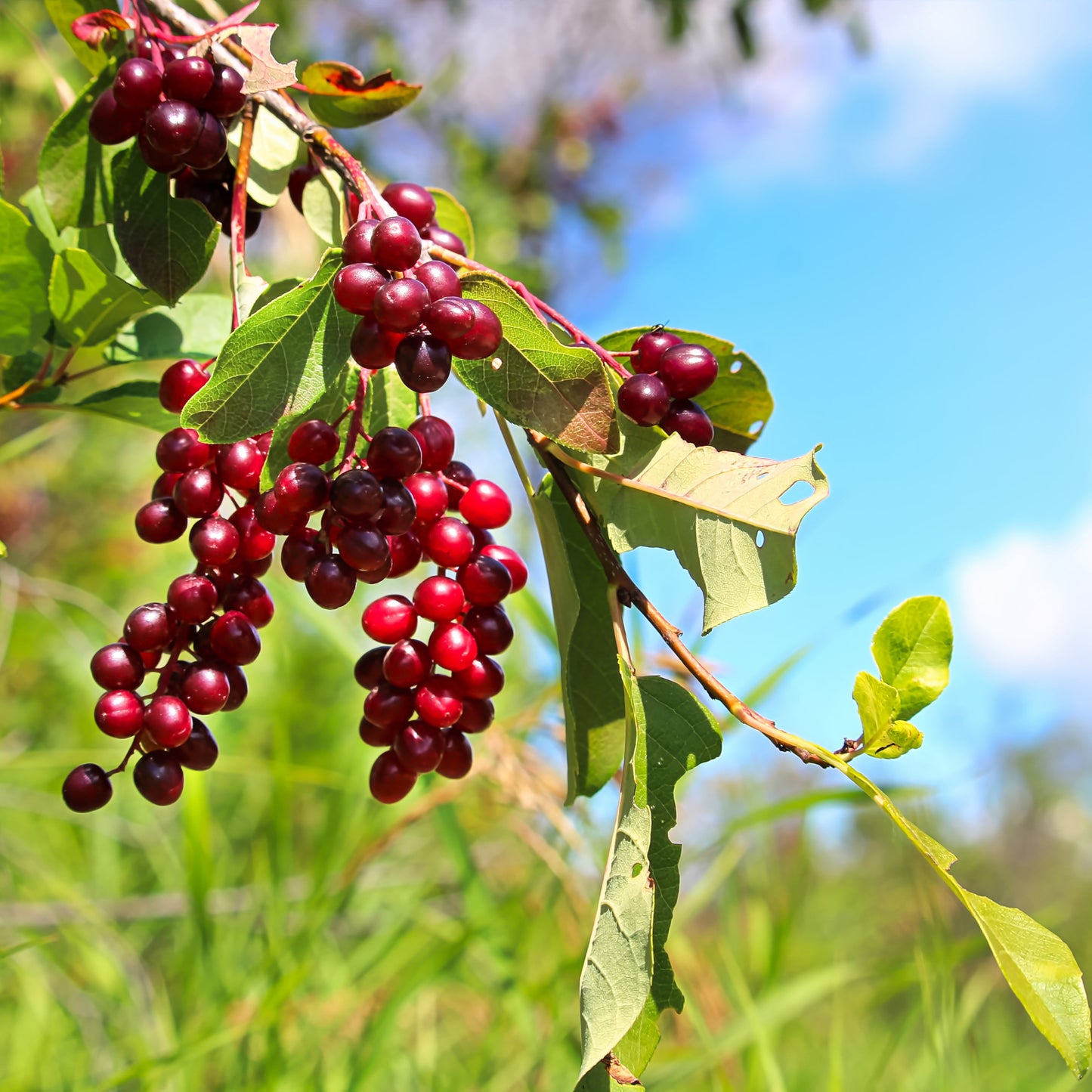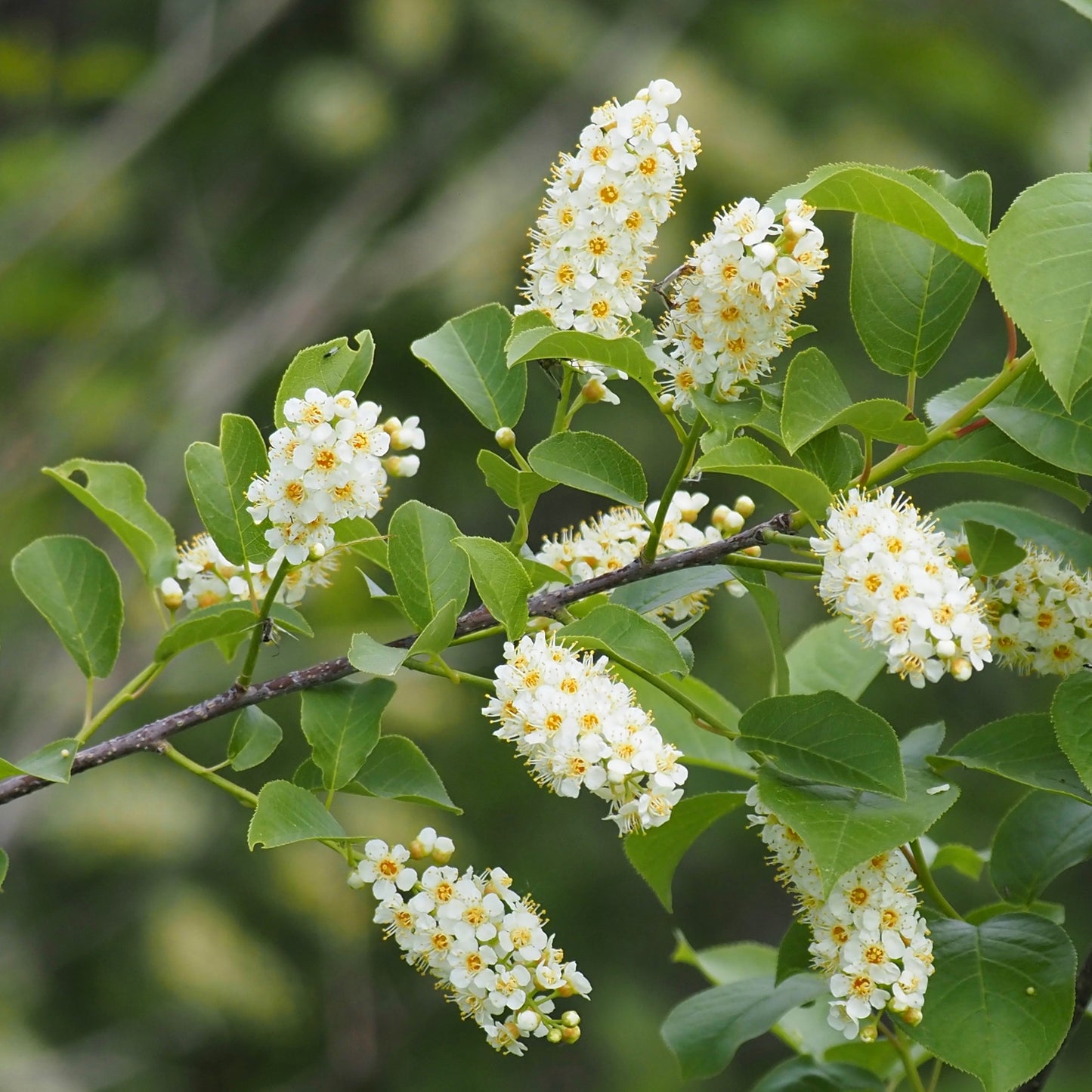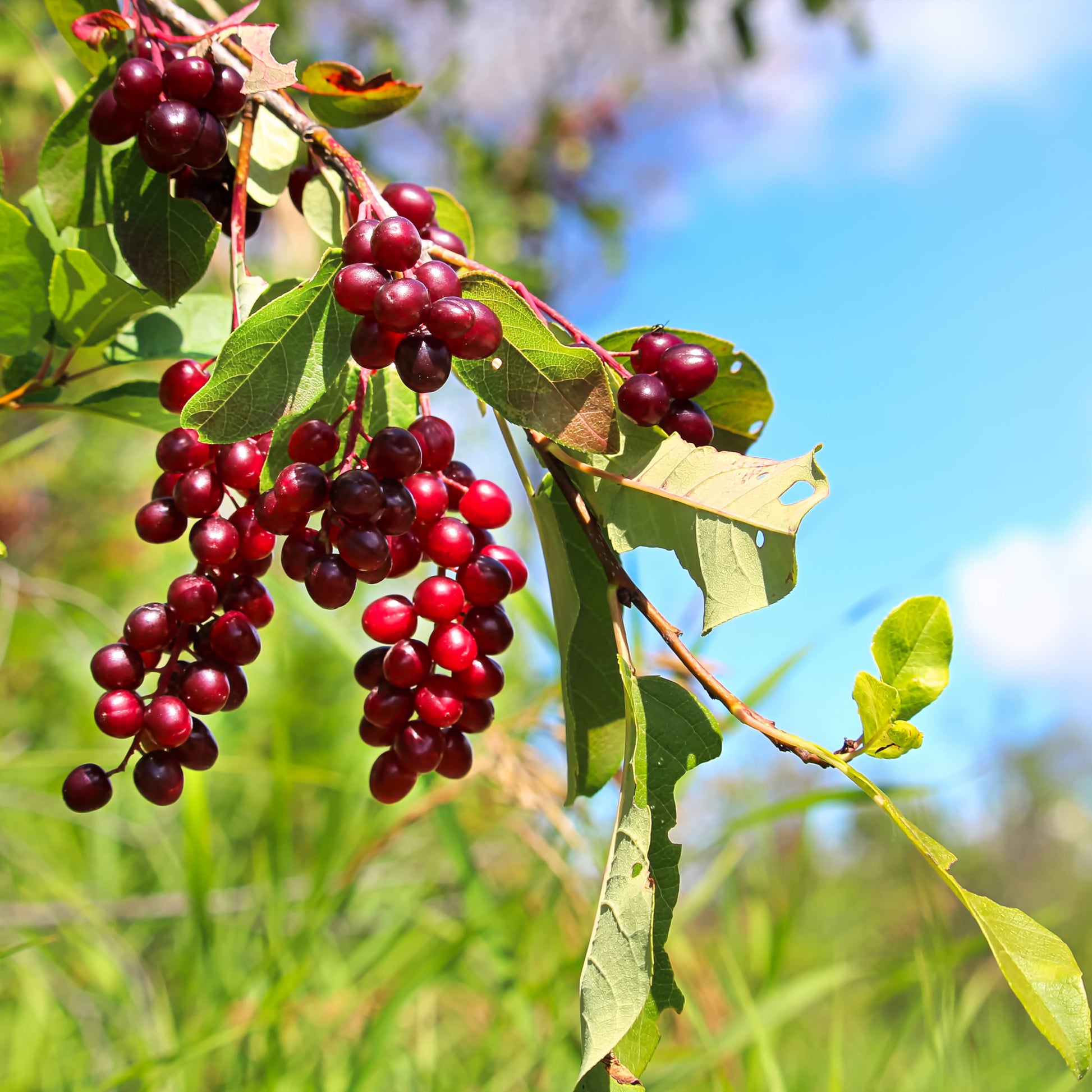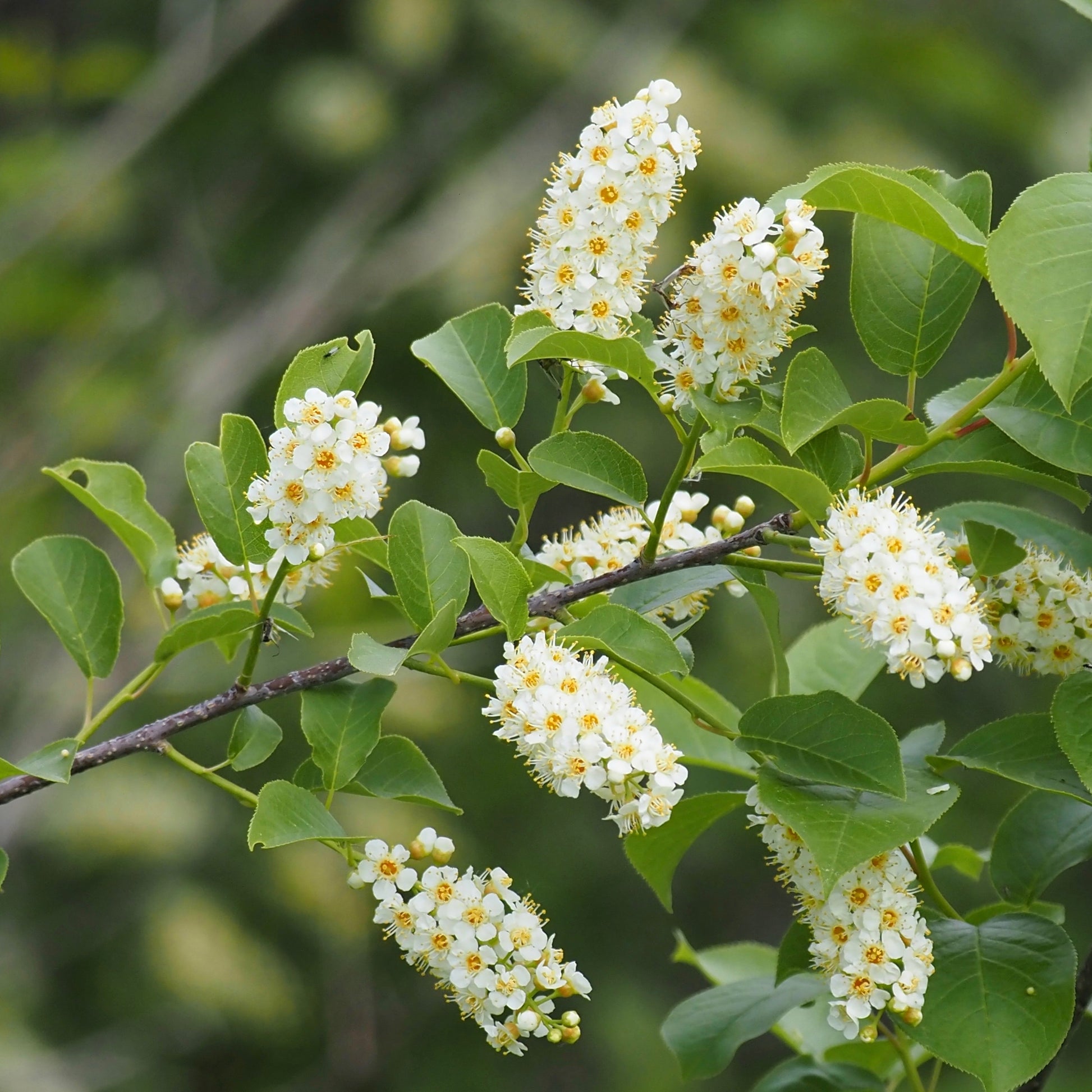Limited Quantities - Reserve Now For Fall
Common Chokecherry
Common Chokecherry
Couldn't load pickup availability
The Common Chokecherry Bush is a hardy, fast-growing native shrub known for its fragrant spring blossoms, nutrient-rich dark berries, and brilliant fall foliage. This adaptable, multi-stemmed shrub is ideal for wildlife gardens, erosion control, and privacy hedges. With its ability to thrive in various soils and climates, the Common Chokecherry is a valuable addition to naturalized landscapes and edible gardens.
Common Chokecherry Bush
| Attribute | Details |
|---|---|
| Variety | Rooted |
| Botanical Name | Prunus virginiana |
| Common Names | Common Chokecherry, Choke Cherry |
| Mature Height | 10-20 feet |
| Mature Width | 10-15 feet |
| Growth Rate | Fast (1-2 feet per year) |
| Lifespan | 40-100 years |
| USDA Hardiness Zones | 2-7 |
| Sun Preference | Full sun to partial shade |
| Soil Type | Well-drained, loamy, sandy, or clay soils |
| Soil pH | Slightly acidic to neutral (5.0-7.5) |
| Water Needs | Moderate; drought-tolerant once established |
| Flowering Season | Spring (April-May) |
| Flower Color | White, fragrant clusters |
| Fruit | Small, dark purple to black edible berries (August-September) |
| Fall Foliage | Vibrant yellow, orange, or red |
| Wildlife Attraction | Bees, butterflies, birds, deer, small mammals |
| Growth Habit | Multi-stemmed, spreading shrub or small tree |
| Self-Pollinating? | Yes, but better yields with cross-pollination |
| Landscape Uses | Hedgerows, wildlife gardens, erosion control, windbreaks, edible landscaping |
| Maintenance Level | Low |
Environmental Benefits
🌳 Erosion Control & Soil Stability – Thrives in varied soil conditions, making it ideal for slopes, banks, and restoration projects.
🐝 Pollinator & Wildlife Friendly – Produces nectar-rich flowers for bees and butterflies, while its berries attract birds and small mammals.
🌱 Drought & Cold Hardy – Adapts to harsh climates, surviving cold winters and dry conditions.
🍂 Multi-Season Beauty – Offers showy spring flowers, edible summer berries, and vibrant fall foliage, ensuring year-round interest.
Pros & Cons
| Pros | Cons |
|---|---|
| Fast-growing and low-maintenance | Can spread aggressively through suckers if not controlled |
| Attracts pollinators and wildlife | Raw berries are bitter and astringent until fully ripe |
| Excellent for erosion control and windbreaks | Can be toxic to livestock if consumed in large quantities |
| Cold-hardy and drought-resistant | Requires full sun for best fruit production |
| Edible fruit is great for jams, jellies, and wine | May require occasional pruning to maintain shape |
Planting & Care Guide
- Spacing: Plant 8-15 feet apart for individual shrubs or 4-6 feet apart for hedgerows
- Soaking: Soak bare root in water for 6-12 hours before planting
- Planting Depth: Dig a hole twice the width of the root system, ensuring roots are level with the soil surface
- Mulching: Apply a 2-3 inch layer of mulch to retain moisture and suppress weeds
- Pruning: Prune in late winter or early spring to remove suckers and shape the plant
- Fertilization: Apply a balanced fertilizer in early spring to promote growth
- Watering: Water regularly in the first year, then reduce as the shrub becomes established
The Common Chokecherry Bush is a versatile, hardy, and valuable shrub that provides wildlife benefits, erosion control, and edible fruit. Whether used for privacy, restoration projects, or ornamental beauty, this low-maintenance, adaptable shrub is a great addition to any naturalized landscape.
Share




